In “biophilia” Edward O. Wilson suggests that humans possess a seek for connections with nature. Our perception has been shaped by natural structures. Rectangular and mass produced furniture ignores the initial urge to connect with forms of life. I want to counteract by creating a biomorphic furniture object, inspired by mountain structures.

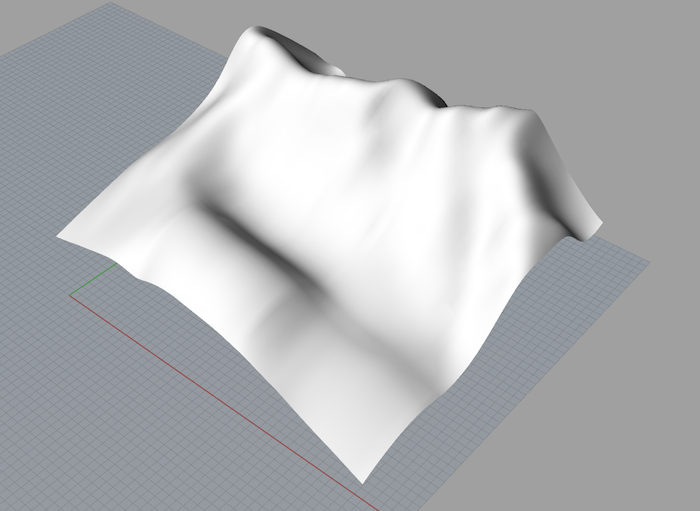

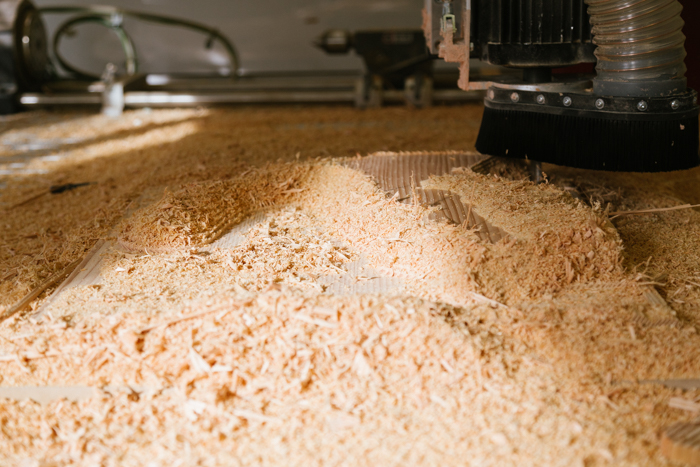
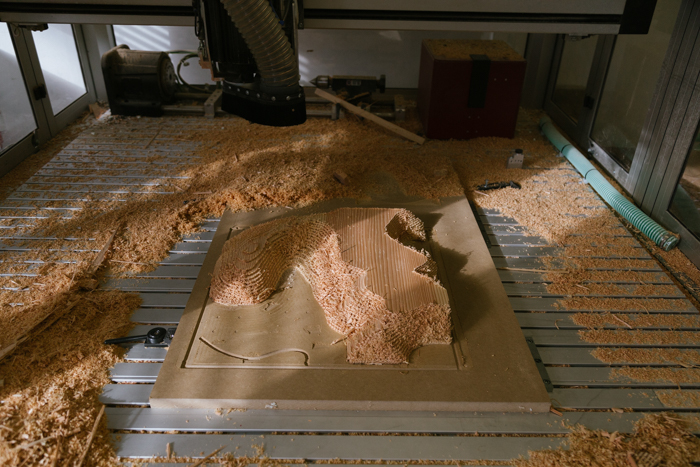
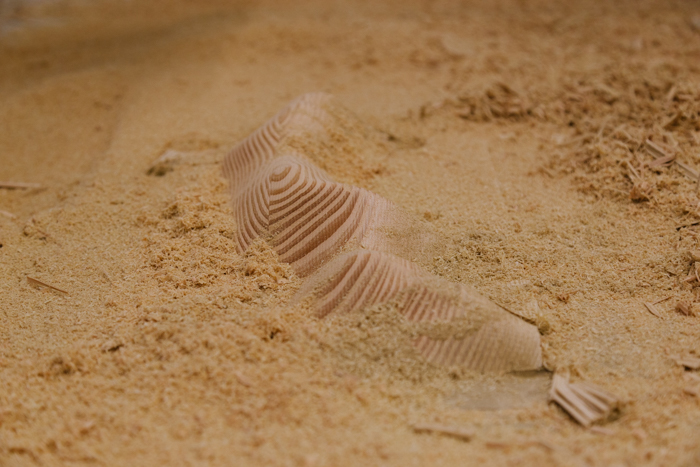


Why mountain structures?
We always have been surrounded by landscapes and we always were fascinated by them.
Compared to complex natural structures, common furniture’s appearance tends to be quite boring. Mass production and the required machinability lead to simple rectangular shapes.
Furniture is commonly known as structurally separated objects, each fulfilling a certain purpose. Most of the times, the way of using furniture is clearly predefined and communicated through specific affordances. Common furniture doesn’t offer any interpretative freedom for the user, to come up with own ways of using a piece of furniture. Therefore, you have to fit in the grid of predefined and limited possibilities of using furniture.
I want to ask the question for a form, that leaves room for interpretation and inspires people to explore the form while discovering new kinds of usage. The object also wants to question the impeachable way of producing and using furniture in the 21st century, through it not being stackable, cheap or easily produceable. Inspired by topologies, my object has an organic appearance, which increases the “readability”, making the object more accessible for the user. This leads to it not having specifically defined and communicated affordances. Much more, the object provides the oportunity to be used in different ways.
FORMFINDING
How do I create an object, which I want people to sit on and to store things, which doesn’t specifically tell people to do so?
I started modeling with clay and created some objects. The problem was, that I always imagined people around my objects and how they would behave being around them.
SITTING
The previous objects were way too specific and detailed. Discussions revealed, that I should focus on affordances of certain surfaces. I tried to create objects, that have an organic appearance and offer the opportunity to sit on.
I initiated a little survey in our project-group on the subject of sitting.
Which objects are good for sitting, which ones rather bad?

good ……………………………………………… bad
On which object would you like to sit, on which ones wouldn’t you like to sit?
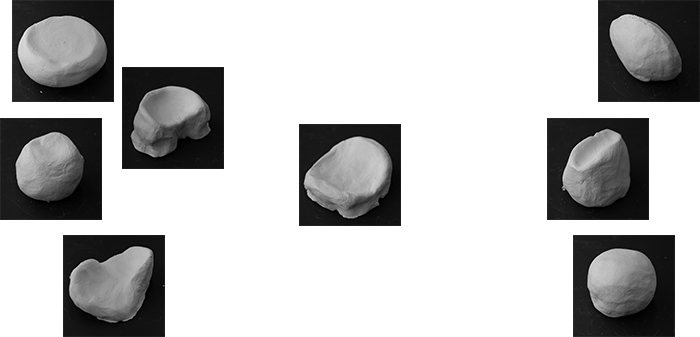
like ……………………………………………… don’t like
On which objects would you consider to sit for a longer longer, on which ones shorter period of time?
good ……………………………………………… bad
PUTTING STUFF
Survey on the act of storing stuff. I asked the project participants to organize the objects after certain criteria.
Which structures are good for storing things, which ones rather bad?

good ……………………………………………… bad
Which object let’s you store things organized, which ones less organized?
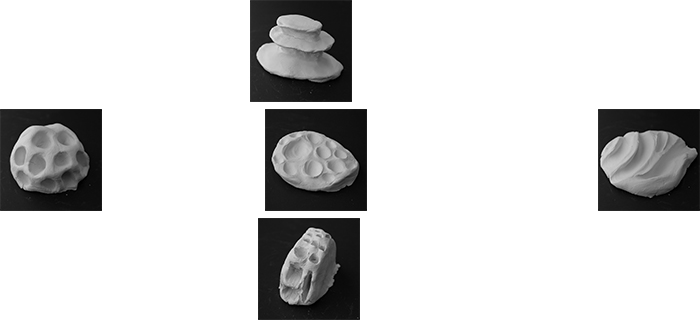
organized ……………………………………………… not organized
In which structure would you preferably store things, in which ones not?

put ……………………………………………… wouldn’t put
TOPOLOGIES OUT OF THEIR CONTEXT AND FUNCTIONAL CENTERS
Mountains or landscapes in general always gave the impulse to be explored. First ascents and expeditions were done due to the exploratory spirit of humankind. My project wants to trigger this spirit at a smaller scale related to furniture.
A biomorphic object as furniture, inspired by mountain-like-structures, could lead to a more interesting and exciting experience in modern environments. Further, it stimulates creativity and the skill of envisioning how the object could be used.
Landscapes have formed because of plate tectonics and erosion over millions of years. This process resulted in valleys, rivers, lakes or ridges. They seem to be arranged quite randomly but the truth is, that they are all functional centers, having evolved because of specific natural circumstances. This resulted in a “design language” with no design process involved.
I took those structures out of their context by scaling them down. A structure with absolutely no furniture-context can inspire people to use the structure as furniture.
My home mountain as a contour-line model:
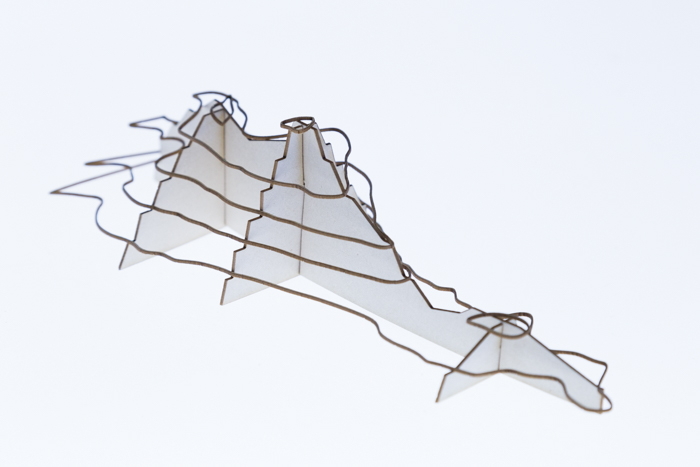


Random mountains in the french alps:
The process of redefining the context of existing natural structures like topologies as a piece of furniture lead in the right direction. Except the change in size, no design process was involved to create structures which offer furniture-like possibilities of use.
These objects have no man-made affordances but encourage people go on their own little expedition to find areas where they would like to sit, to relax, to crouch, to put their belongings, …
RELATING SURFACES
The physical condition e.g. the size or weight of an object normally doesn’t affect the piece of furniture which it’s interacting with. With my object, I want to create shapes and surfaces which not only visually but also functionally interact with another.
In a small experiment, physical parameters were picked up by elastic silk tights and made visual trough the silk tight’s change in form.
I think, this makes surfaces a lot more graspable and easier to understand. On the contrary, a rectangular table only offers a homogenous, boring and abstract surface, far away from natural shapes.
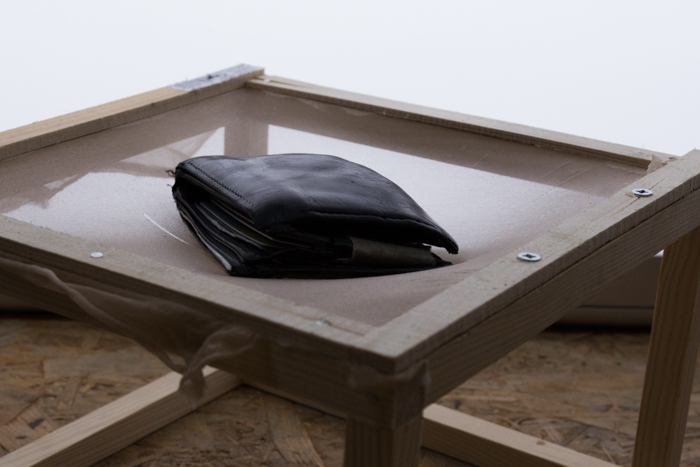



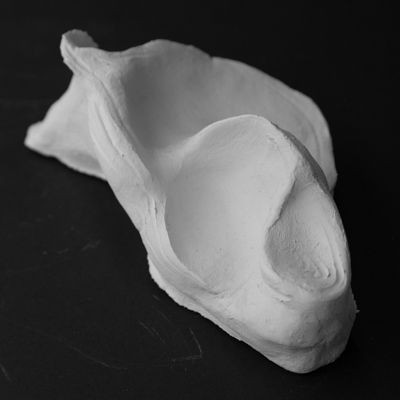





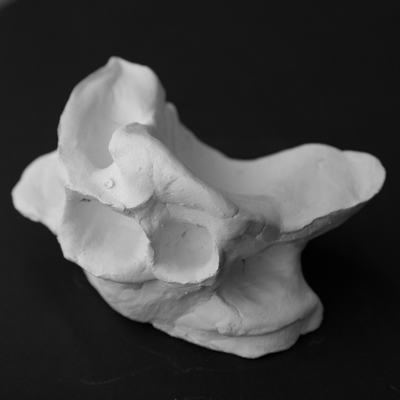
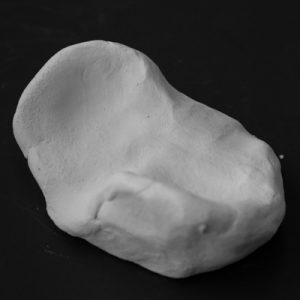

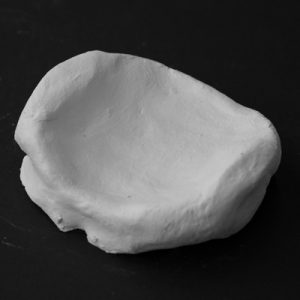

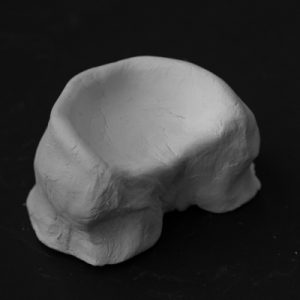

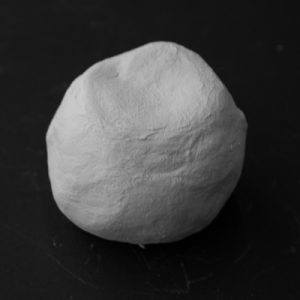
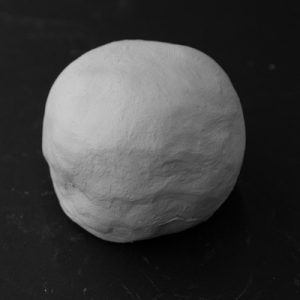

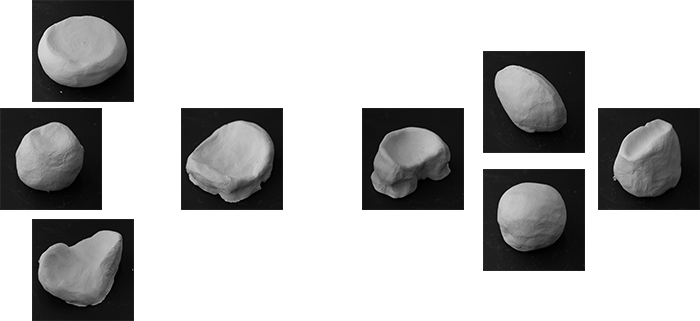
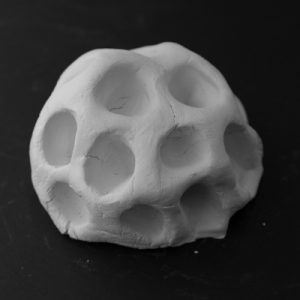
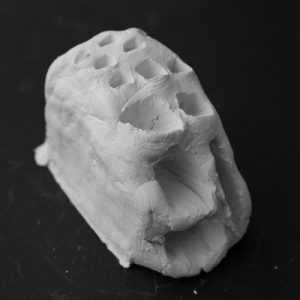






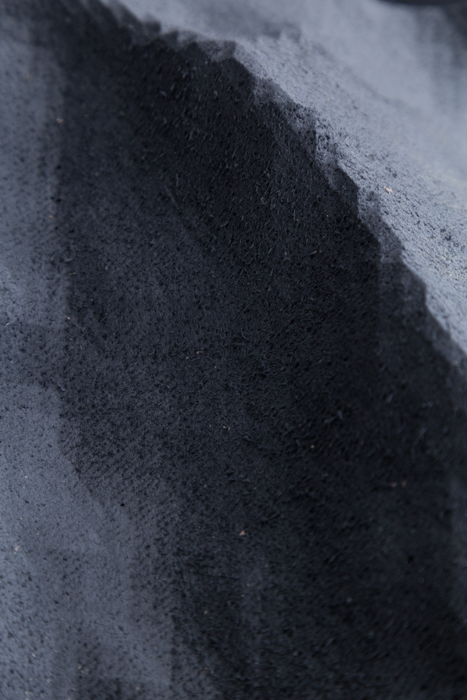
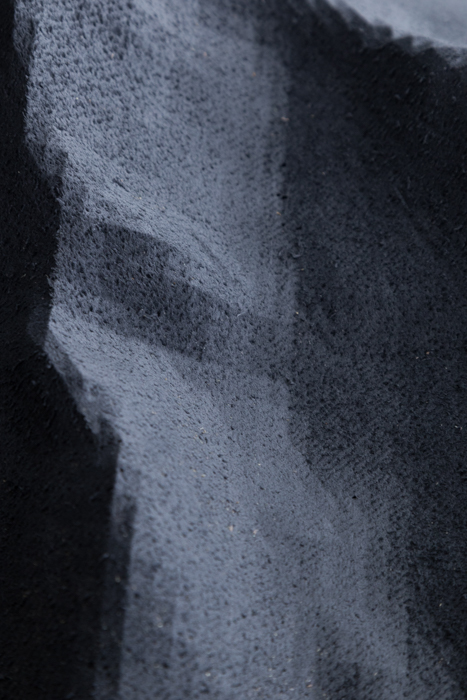
When you say you want to leave “room for interpretation” I wonder in which direction you are hinting. Or to put it differently: Why should people explore the form? Is it about the relationship between their bodies and the object(s)? And if yes, what aspects are you interested in particularly? Or is it about how we identify “usefulness” in objects? Or about the relationship between those objects and their environment, how the function of an object can change according to its context?
I also liked how you asked us on which objects we would like to sit, etc. You might want to document that here!
I find the development of your form finding process quite remarkable. Your first experiments already showed lots of explorer spirit and will, but they all felt a bit awkward and clumsy, whereas in my opinion the shift towards the utilization of naturally given shapes, namely mountains, raised the aesthetic and conceptual interest of your project by many levels. Your belonging text passage “TOPOLOGIES OUT OF THEIR CONTEXT AND FUNCTIONAL CENTERS” is also the one that makes the most sense to me and that I feel captures best what you want to point out.
What I find pretty confusing though is that you put the form finding experiment with the silk tights after the mountain shape part, whereas the actual order was the other way around. Also to be honest I don’t really get the belonging text passage. I thought I had understood the experiment itself, but your text makes it a lot more complicated than I thought it had to be (if that makes any sense?).
In general I still feel like you’re heading towards a good direction and I’m excited about the objects to come. 🙂
First of all: Excellent documentation! It‘s already really interesting how you tried to generate various forms, experimented with them, got people to interact with them.
I think it would help to phrase your concept in the pattern that Ralph told us. Very few sentences, short and simple to understand (also for a design ‘amateur’). (How would you describe your project to someone who has never heard about it before in 1-2 minutes)
There are some sentences in there, that I have to read multiple times and think for some time and try to understand what you want to say.
I like and unterstand your explanation on why you choose mountains!
The whole part about surface relations – like nikolai already pointed out – is quite confusing.
In general there are too many explanations why your object is how it is, and does what it does.
Adding the last part makes it seem like you want to shift the direction of your project?
If so, don’t do that. You’re on a good way. I think there are more important questions that you need to tackle.